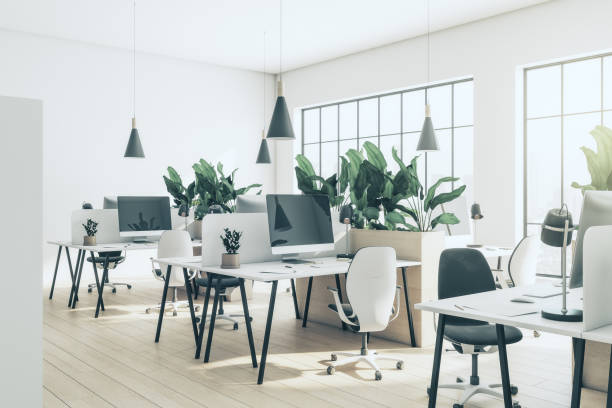Introduction Modern Office Table
In the ever-evolving landscape of the modern workplace, the office table stands as a symbol of functionality, collaboration, and aesthetic appeal. Gone are the days of rigid, monotonous desks that confined workers to uninspiring cubicles. The contemporary office table is a dynamic entity, adapting to the changing needs of the workforce and reflecting the values of today’s businesses. This article explores the evolution of modern office table, shedding light on their design, functionality, and the role they play in fostering a productive and engaging work environment.
Functionality Meets Ergonomics
One of the most significant shifts in office table design has been the emphasis on ergonomics. Recognizing the importance of employee well-being and productivity, modern office table are crafted with a focus on comfort and functionality. Adjustable height desks have become a staple, allowing workers to switch between sitting and standing positions, promoting better posture and reducing the risks associated with prolonged sitting.
Furthermore, integrated cable management systems have become commonplace, addressing the challenges posed by the plethora of electronic devices in the contemporary workspace. Wireless charging pads and USB ports are seamlessly incorporated into the design, ensuring that the office table serves as a hub for connectivity and productivity.
Collaboration and Flexibility
The traditional notion of a solitary desk has given way to a more collaborative and flexible approach. Modern office table are designed to facilitate teamwork, with options ranging from long communal tables to modular configurations that can be easily rearranged to suit different tasks and group sizes.
The rise of open office layouts has fueled the demand for collaborative furniture. Large, communal tables encourage spontaneous discussions and idea sharing, fostering a sense of camaraderie among employees. Additionally, many office tables are equipped with built-in whiteboards or writable surfaces, transforming the workspace into a dynamic canvas for brainstorming sessions and creative collaboration.
Aesthetics and Brand Identity
In the modern business landscape, the office is not merely a place to work; it is a reflection of the company’s brand and culture. As a result, office furniture, including tables, plays a crucial role in shaping the aesthetic identity of a workspace. Designers are now paying careful attention to the visual appeal of office tables, ensuring they align with the overall branding and atmosphere of the company.
Materials, colors, and finishes are carefully chosen to create a cohesive and visually pleasing environment. From sleek, minimalist designs to tables incorporating natural materials like wood and stone, the options are diverse, allowing businesses to express their unique identity through their choice of office furniture.
Technology Integration
The integration of technology into office tables has become a defining feature of modern workspaces. With the increasing reliance on digital tools and devices, office tables are equipped with smart features to enhance efficiency and connectivity. Touchscreen monitors, built-in charging stations, and cable-free connectivity options are becoming standard elements of contemporary office table design.
The Internet of Things (IoT) has also made its way into office furniture. Smart tables equipped with sensors can collect data on workspace utilization, helping companies optimize their office layouts for maximum efficiency. These technological integrations not only streamline daily tasks but also contribute to a futuristic and tech-savvy work environment.
Sustainability and Eco-Friendly Designs
In response to the growing awareness of environmental issues, the design and manufacturing of office tables are increasingly focused on sustainability. Many modern office table are crafted from recycled or eco-friendly materials, reflecting a commitment to reducing the carbon footprint of office furniture production.
In addition to sustainable materials, some manufacturers are adopting eco-friendly production processes, such as using water-based adhesives and low-VOC finishes. These efforts align with the broader trend of creating environmentally workspaces, appealing to businesses and employees who prioritize sustainability.
Customization for Personalization
Recognizing that one size does not fit all, modern office table are designed with customization in mind. Businesses can choose from a variety of shapes, sizes, and configurations to tailor office furniture to their specific needs. This personalization extends beyond the functional aspects, allowing companies to select finishes, colors, and materials that align with their brand aesthetics.
Customizable office tables contribute to a sense of ownership and identity among employees. Personalized workspaces have been shown to enhance employee satisfaction and productivity, as individuals feel more connected to their environment when it reflects their preferences and work style.
Conclusion
The evolution of modern office table reflects a broader shift in the way we perceive and design workspaces. From ergonomic considerations to collaborative features, aesthetics, and sustainability, contemporary office tables are multifaceted tools that go beyond mere functionality. As the nature of work continues to evolve, so too will the design of office furniture, adapting to the needs and preferences of the workforce while contributing to the creation of inspiring and productive work environments.

